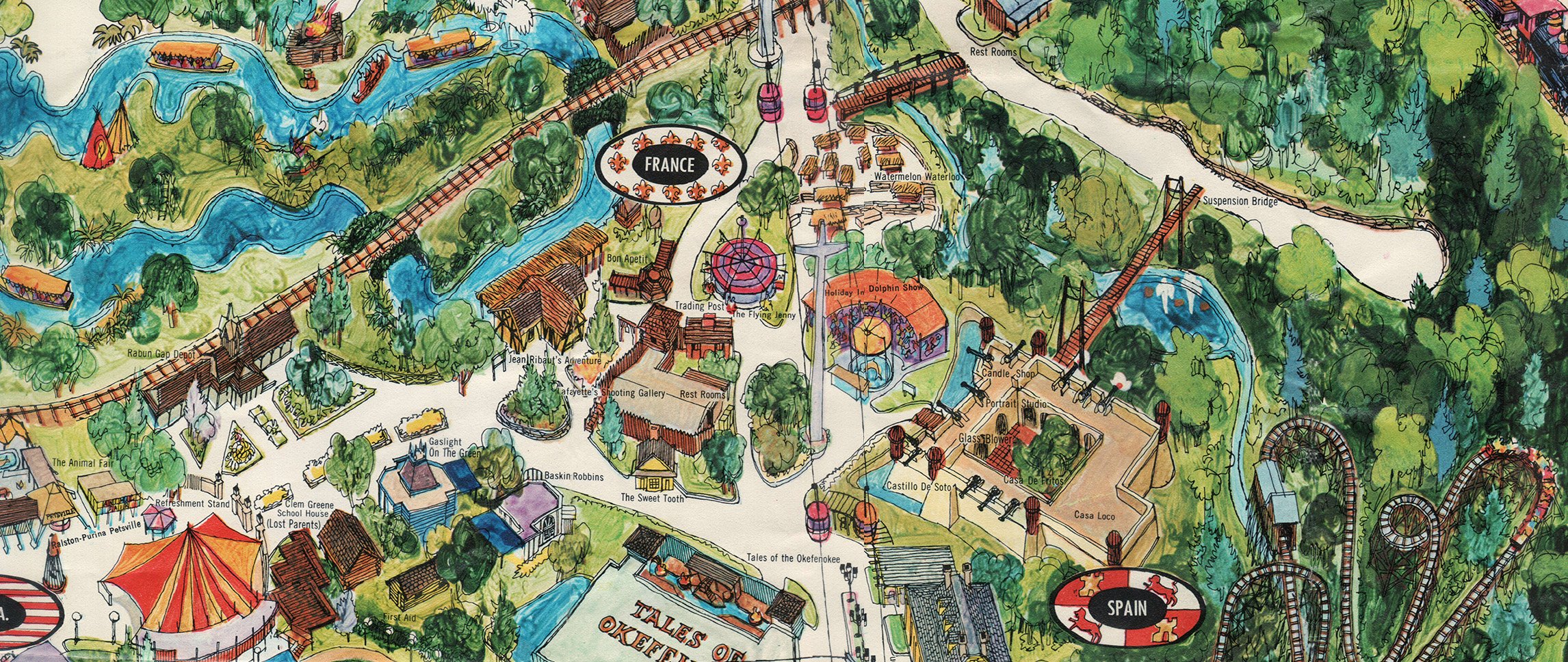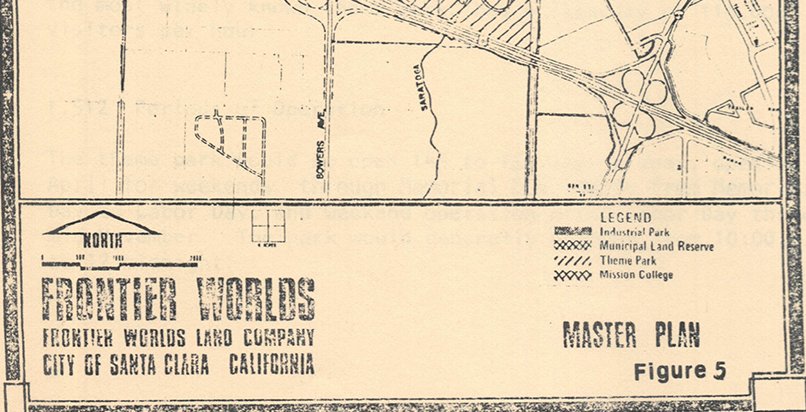
BUSCH GARDENS LOS ANGELES
Busch seemed to have hit upon a magic formula. The Tampa property saw continual expansion over the years, including a bird aviary in 1960 and the Serengeti Plain in 1965, a vast 70-acre free-roaming animal preserve. Their experiment an unqualified success, the company decided to try the same approach at their brewery in Van Nuys, California. Adapting the design concept from Tampa, 17.5 acres from a former cabbage patch was converted by Bill Morgan—Disneyland’s landscape designer—into another beautiful oasis of gardens, full of subtropical flora and fauna, a wide variety of exotic birds, and of course the free tour of the brewery.
Opening May 26, 1966 at a cost of around $4 million, Busch Gardens Los Angeles was similar to the Tampa property with free admission, immersive pathways, a bird show, and colorful birds flying everywhere. But for 50 cents you could board a 34’ fiberglass canopied boat and enjoy a 20-minute cruise through the wonderland. The electrically powered craft rode a submerged rail that wound through three areas. First was Palm Island, a cluster of islands with palms, subtropical foliage, exotic birds, and lots of flowers. After proceeding underneath a couple of overhead foot bridges, the waterway turned and passed by Michelob Terrace, an open platform for guests to relax and sample the company’s products while gazing at the rich scenery (and passing boaters). Next was the Central Lagoon, an open expanse of water with waterfowl and Flamingo Island; on one shoreline stood the Budweiser Pavilion, facing it across the lagoon was the 450-seat bird show amphitheater. Continuing onward the path started to get twisty; you could hear the thundering waterfalls and look up at the towering crags of the Gorge. This mountainous region was fashioned from tons of volcanic foam rock extracted from a local lake, being much lighter and easier to work with than regular rock.
Arrow Development, the can-do upstart manufacturer of coasters and other amusement rides, produced the Skyrail, a suspended monorail that provided an elevated tour of the brewery facilities. Which, after all, was the main purpose of the exercise. These were promotional facilities, offered at no charge to the public and intended to push the brand. Over time, however, the need for expansion at both the California and Florida properties and the resulting increases in operating costs forced the company to reconsider the business plan. In June 1970 Busch announced their intention to convert these hospitality centers into entertainment business ventures, essentially gated theme parks. Tampa, flourishing with 2.5 million guests in 1969, would again be the prototype with a $12.6 million expansion and a new entrance fee of $2 in 1971. The Van Nuys park added amusement rides along with an adult ticket price of $2.75 for the 1972 season. The beer, as always, would remain free.
Meantime the company was planning two additional locations in Houston and Williamsburg, VA. The formula would be roughly the same, with a gardens park area adjacent to the brewery. But these would be pay-at-the-gate attractions from the get-go, with the property in Texas being the first to give it a go.
But by 1979, two years after reverting back to a promotional attraction, it was all over in California. Busch Bird Sanctuary closed completely after a turbulent 13-year run to make room for a $250M brewery expansion. As someone quipped along the way, apparently a bird in the hand wasn’t worth a Bud in the can. Most of the exotic bird collection (1200) was relocated to Tampa and Williamsburg, along with a few zoos. The only remnant is the old bridge over the railroad tracks, still sitting there and completely disconnected on either end. Most folks have no idea what’s up with the “bridge to nowhere,” but to those in the know, it’s a silent reminder of a time gone by.


















